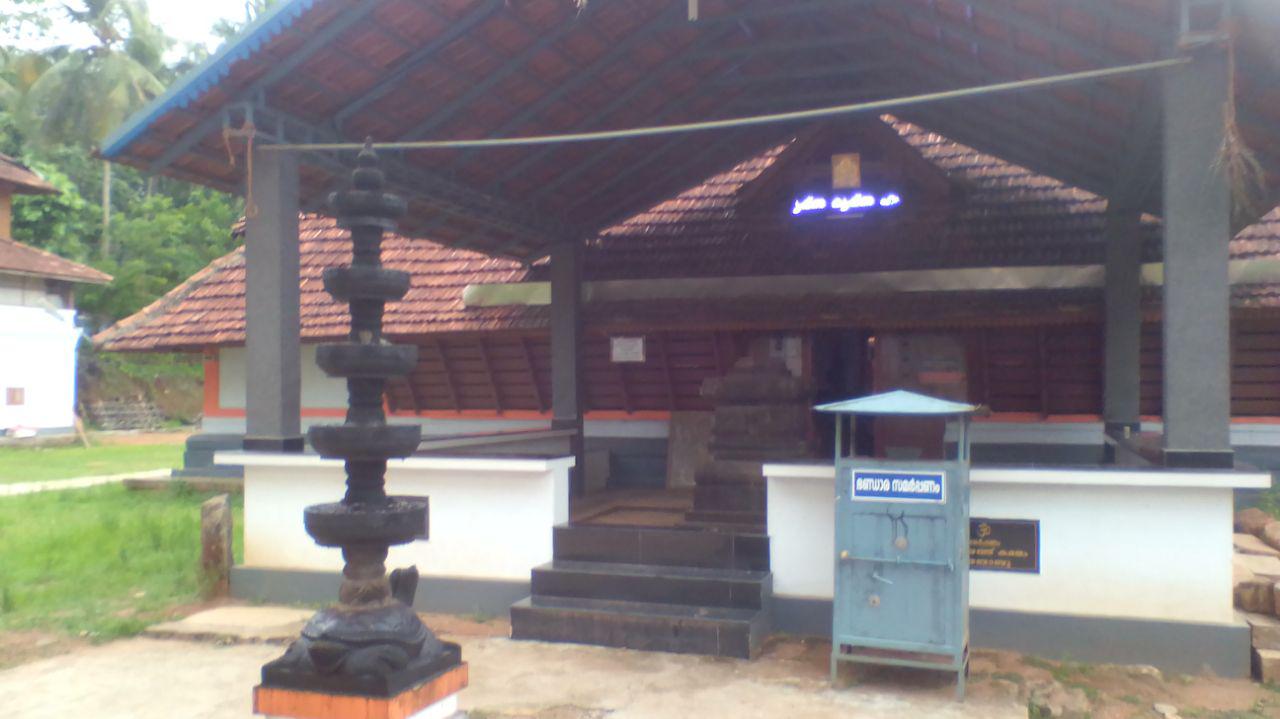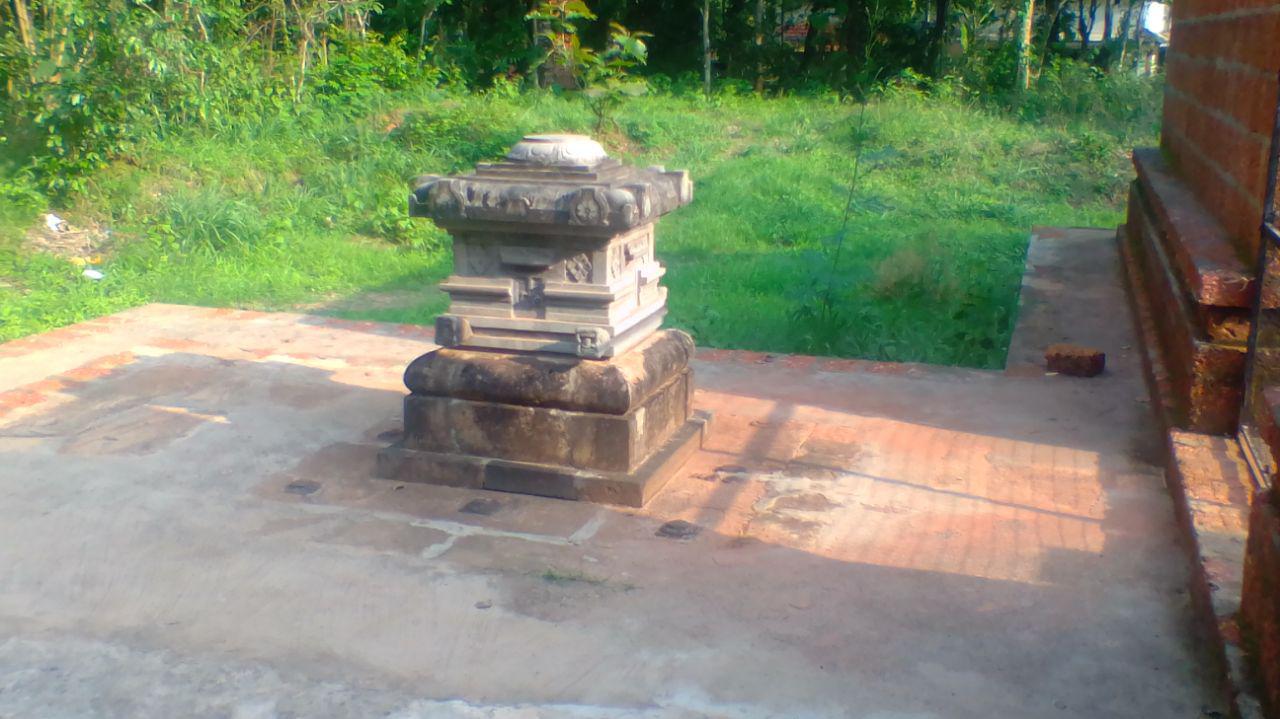Forgotten Temples Of Malappuram – Part I (Nalambalam of Ramapuram)
The region of Malappuram in northern Kerala was deemed as the cultural capital of Kerala, afore its eradication by the incursions of Hyder Ali and Tipu Sultan. Be it extraordinary mathematicians or orthodox somayajins, most of the eminent personalities of Kerala hailed from this region. Some of them are Thunchathu Ramanuja Ezhuthachan (considered as father of Malayalam), Melpathur Narayana Bhattathiri (author of Narayaneeyam), Nilakantha Somayaji (famous mathematician), Achyuta Pisharodi (mathematician and astronomer) etc., As a result, it had to bear a major brunt during the Mysore invasions of Malabar, during which the sultans of Mysore were hellbent on destroying the native culture of Kerala.
The region of Malappuram apart from being the residence of many of the eminent personalities of Kerala, was additionally the hub of many ancient temples. Almost all of these major temples were destroyed by Tipu Sultan during his invasion – which is known as ‘padayottam’ (quick march of army – as it was a blitzkrieg through the region) among locals. Apart from this destruction of temples, Tipu was also responsible for the change in demography of this region, which has now resulted in the conversion of this cultural capital of Kerala into a hub of Islamic extremism. But despite this dire situation, a silent Hindu resurgence can be seen in this region over the past 2 decades.
Many of the temples destroyed by Tipu, which were either in ruins or encroached by Muslims, who were settled by Tipu after his victory here, are now being reclaimed and rebuilt. Despite being made economically weak by the various land reforms acts which involved transfer of the lands in their possession to the so called poor Muslims in order to ensure economic equality, the Hindus of this region have pooled their earnings to rebuild these ancient temples hoping that the installation and worship of their native deities will result in the restoration of the lost glory of this region. In this series of articles, we will be presenting the stories of sthala puranas of these ancient temples of Malappuram, their historical importance, destruction during the Mysore invasion and restoration by native Hindus.
In the first part of this series of articles on the ancient temples, we begin with the Nalambalam (four temples) of Ramapuram near Perinthalmanna town in Malappuram district. Nalambalam is a term which is generally used to denote the quartet of temples dedicated to the four brothers of Ramayana viz Rama, Lakshmana, Bharata and Shatrughna.
Historically, the state of Kerala has been famous for its Ramayana legacy. Even the earliest of Kavyas composed in Malayalam was the Adhyatma Ramayana of Thuchathu Ramanuja Ezhuthachan. Even now during the Karkada month of Malayalam calendar, which falls between mid July and mid August, the devout Hindus of Kerala recite Ramayana everyday and visit many ancient Rama temples across the state.
The story about the erection of this Rama temple of Ramapuram is also filled with devotion. It is believed that, a millennium ago, this salagrama murti of Rama was brought from Nepal to the Vadakkedathu Mana (one of the two main namboothiri houses of this region, the members of which were managing the temple till it was taken over by Malabar Devaswom Board) by a brahmin. When the brahmin visited the household, the males of the household had gone to attend the festival at a nearby temple. As a result, the brahmin asked the female members of the household to take care of the murti while he went out to perform his evening rituals.

Entrance of Sri Rama Temple, Ramapuram

Pond of Sri Rama Temple, Ramapuram

Deepastambham of Sri Rama Temple, Ramapuram
The young girl of household was so moved by devotion on looking at the murti that she prepared and offered Palpayasam to it. The lord was pleased by this devotion of the young girl and decided to stay there. An asariri which occurred when the brahmin tried to life the murti on leaving, denoted the same and in accordance to it, this temple was also built. After this as the times passed, three more temples dedicated to the three brothers of Rama were also constructed around the temple within 2 km radius of this Rama temple.
During the invasion of Tipu Sultan, Ramapuram was basking with glory by the dharmakaya of eminent personalities from Vadakkedathu and Thekkedathu manas, who were managing these 4 temples. Tipu killed a large number of Hindus of this town and ravaged all the four temples. A few Hindus who survived took refuge in Travancore till he was completely defeated by the forces of Travancore making him flee Kerala.
Post Tipu’s invasion, when the local hindus who were taking refuge in Travancore, returned to their homeland, they found that the invading forces under Tipu had thoroughly razed the Lakshmana Swami temple. Furthermore the Bharata and Shatrughna temples were in shambles and the Rama temple was also in a vandalized state. As the Rama temple was the most important and famous temple among the four, it was restored immediately in the early 19th century. But now despite of various difficulties in garnering funds, the remaining three temples are also being reclaimed and rebuilt.

Sri Lakshmana Swami Temple, Ramapuram
The restoration of Lakshmana temple is complete and it is being managed by a private committee. As the temple is in an area where not many Hindus are present, the archaka here is a person originally from Kanpur. This shows the strength of unity among Hindus which when ignited can trounce regionalism and various other divisions no matter in which form they subsist. Worship has also restarted in Bharata and Shatrughna temples which are currently being rebuilt using the funds generated from the devotees who visit these four temples, mainly during Karkada masam. The administration of Shatrughna temple is under Thekkedathu Mana while Bharata temple is being administered by a committee of devotees just like the Lakshmana temple.

Main Shrine of Shatrughna Temple, Naranath
The Rama temple which is the most famous and the largest income generating temple of the town has been taken over by the Malabar Devaswom Board. On hearing this, one can’t stop wondering whether this takeover of the high income temple which was rebuilt by the locals post its destruction, was the reason behind the huge gap of time between the rebuilding process of other three temples for Malabar Devaswom Board has exhibited no interest or support in rebuilding any of these ancient temples which were destroyed by Tipu.

Balikkal of Bharata Swami Temple, Chirammal

Main Shrine of Bharata Swami Temple, Chirammal
This vulturous attitude of taking over rich temples and preventing support to small temples around it by Malabar Devaswom Board is not restricted to this temple alone. Recently, the Guruvayur Parthasarathy temple which was rebuilt after being in shambles for about two centuries by the localites was also taken over forcibly by the Malabar Devaswom board when it started to generate a large income.
While it is heartening to see the efforts being taken by a minute number of hindus in the islamic hub of Malappuram region, it is equally heartbreaking to see their efforts being spoiled by the takeover of these rebuilt temples by the secular government which is slowing down the process of rebuilding various other temples in the region. We will continue to see about various such temples which have been or are being rebuilt by the local Hindus of Malappuram in their effort to restore its glory which has been lost by the disease called islamic terrorism, the seeds of which were sown by Tipu and currently being raised by many extremist outfits like PFI.
Welcome to Haindava Keralam! Register for Free or Login as a privileged HK member to enjoy auto-approval of your comments and to receive periodic updates.
Latest Articles from Dharma Smriti
- In memory of Dr N Gopalakrishnan
- Treading the Middle-Path on Temple Management
- ആദി ശങ്കര ജയന്തി – പ്രഭാഷണം
- അമേരിക്കന് പ്രൊഫസര് ജോണ് ഗ്രൈംസിന് ഭഗവാന് ഗണേശന് കൊടുത്ത ദിവ്യാനുഭവം
- Forgotten Temples Of Malappuram – Part I (Nalambalam of Ramapuram)
- Holy Karkidakam – Ramayana to Echo from Haindava Homes
- Poonthanam’s complete works translated into English
- Pamba Aarati – Dispell the Engulfing Darkness
- Milords! What the judiciary must know before any final verdict on Sabarimala
- Swami Chidanandapuri on Sabarimala


Responses